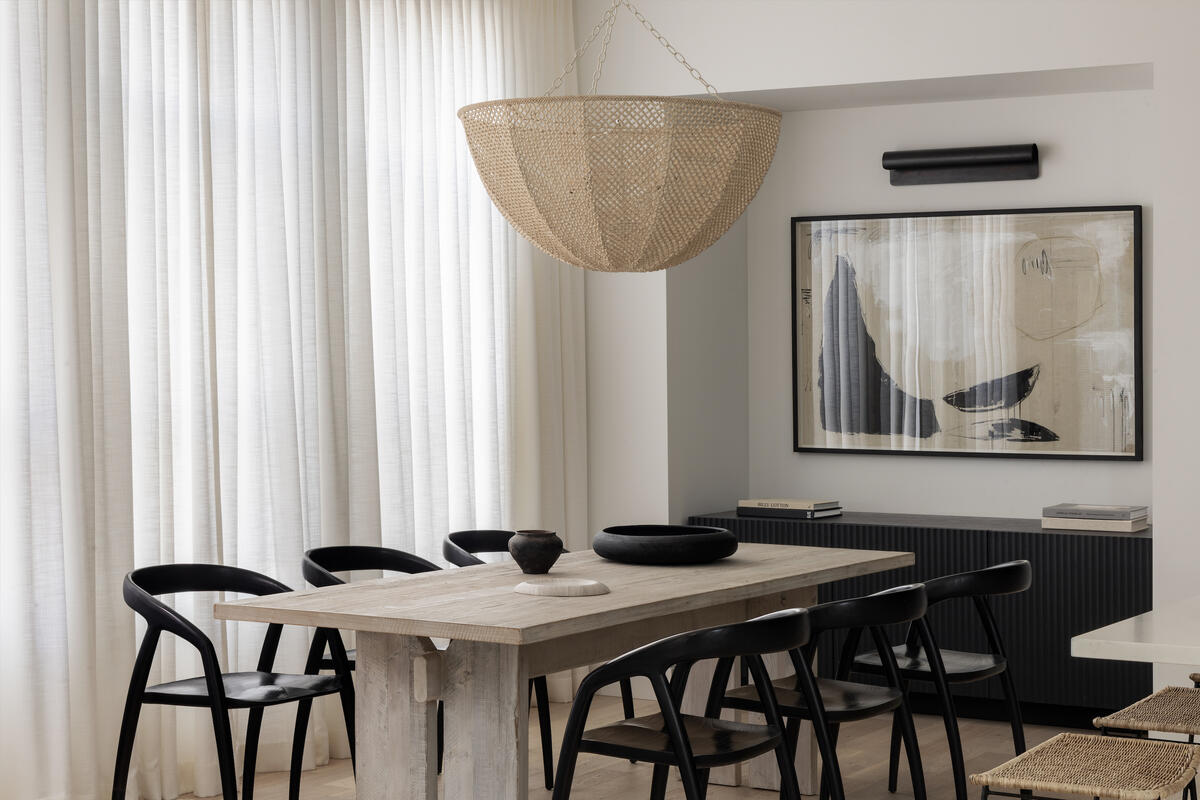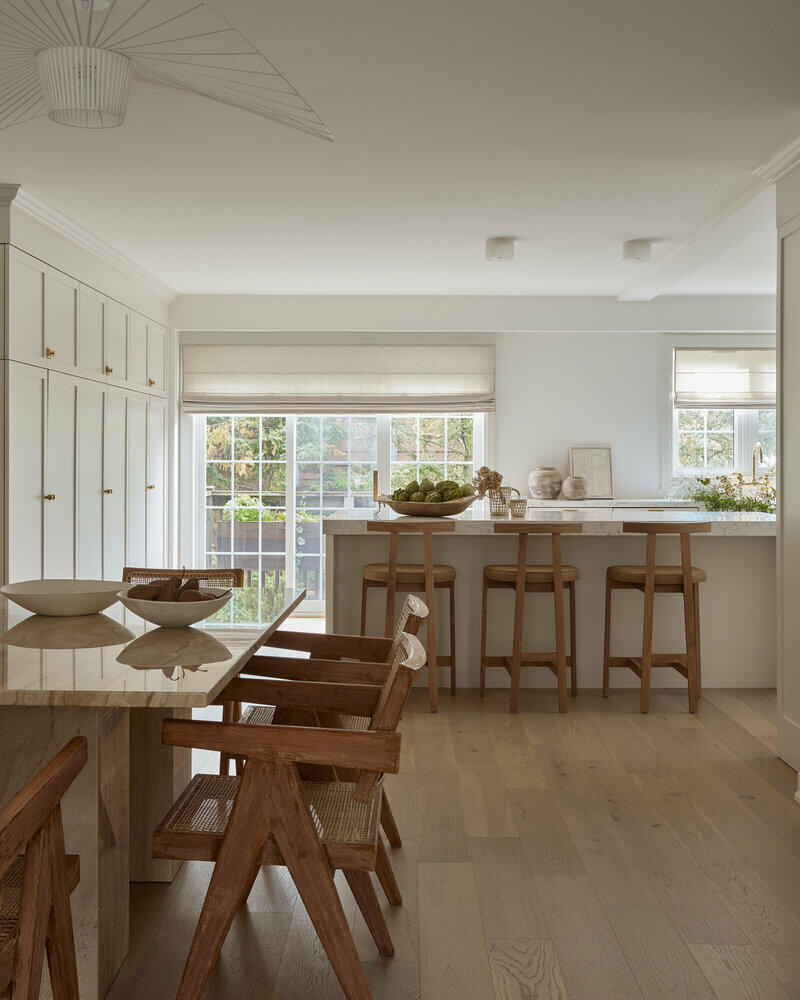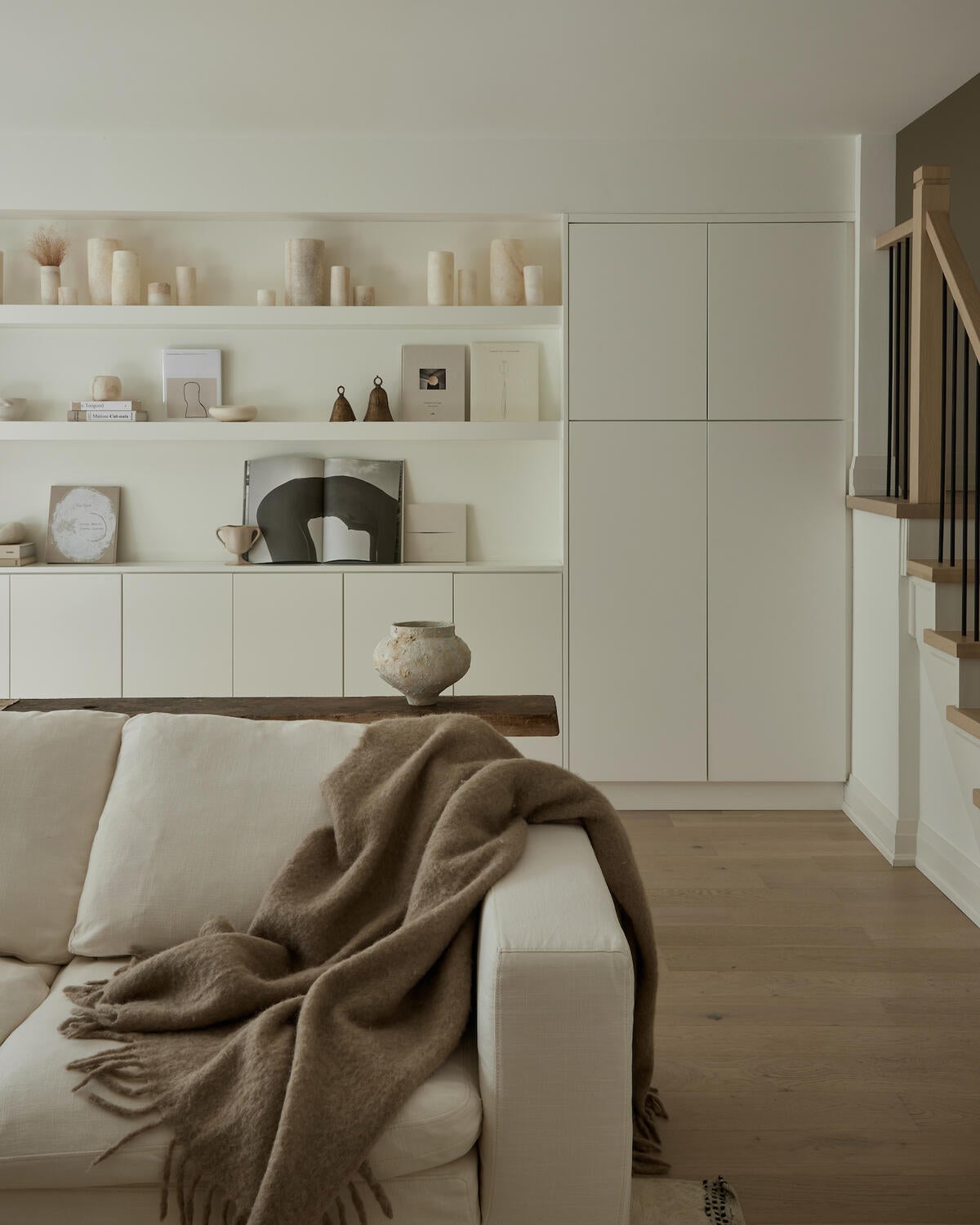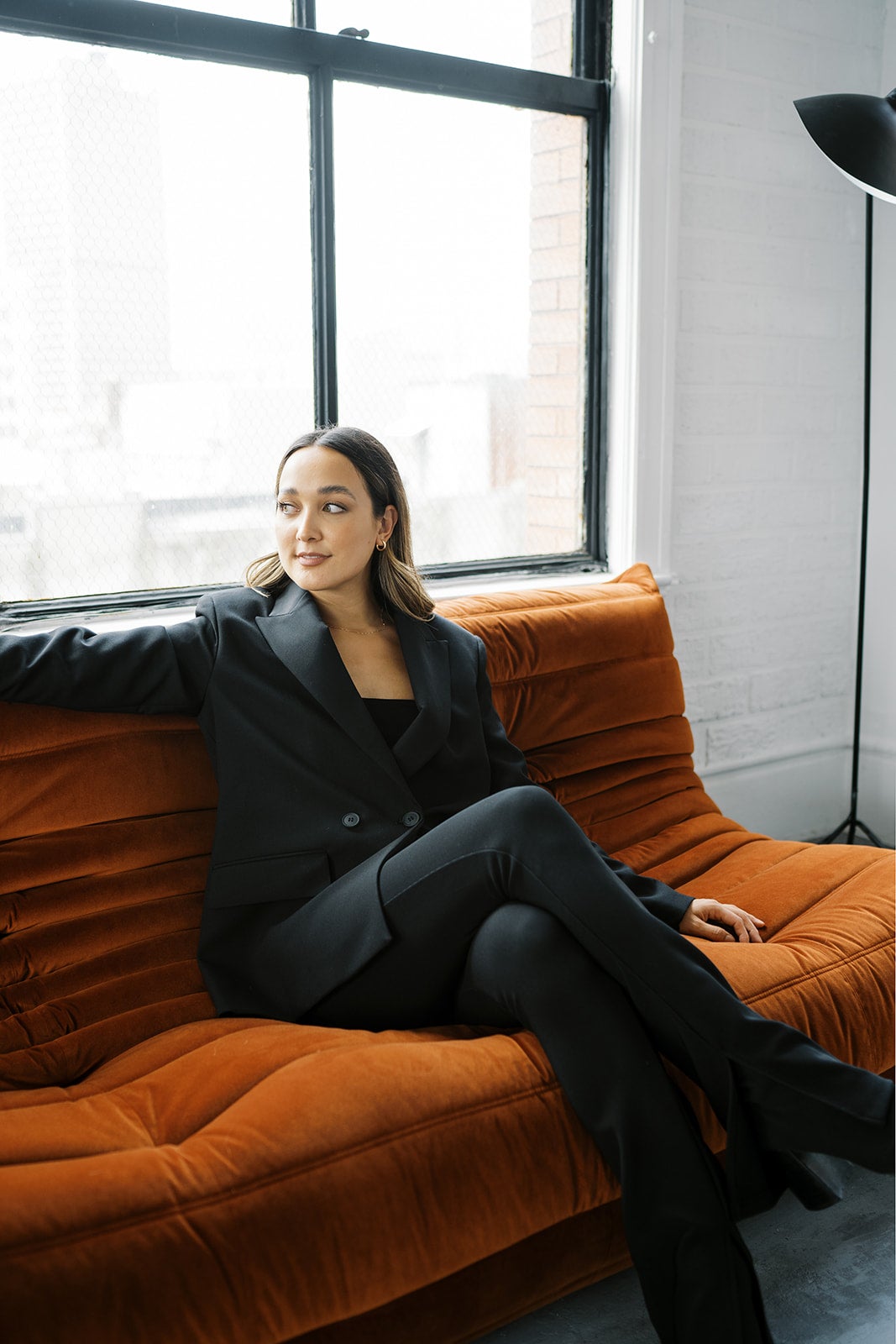In Ask an Influencer, Business of Home explores the creator economy. This week, we spoke with Vancouver-based interior designer and content creator Carmen Javier.
This summer, Carmen Javier finally broke down and got on TikTok. At that point, the Vancouver-based designer was no stranger to social media; in fact, she began her career, business degree in hand, with a tech company that provides software and services to social media influencers. “Working closely with content creators and seeing them do what they love and turn it into a business and a career made me realize I wanted to do the same thing,” says Javier. “And so, as kind of like a fun creative project, I started an interior design blog.”
The business side came quickly, as completing and documenting her own home project helped Javier pick up enough local clients to get her firm off the ground. On the social media side, it was a slow start—among the already saturated design crowds on Instagram and in the blogging world, it was difficult to harness a substantial following. Then, she joined TikTok.
Javier decided to channel her 10-year-old self, who thriftily scoured Craigslist for discount home furnishings she could buy with her allowance (once even scoring a chandelier that she convinced her parents to help install in her childhood bedroom), with a series of videos informing viewers on how to find affordable quality decor items online. It was an instant hit: Three months later, she had 40,000 followers—and more importantly for Javier, her design business was booked out for the next year.
Ahead, she shares her mental trick for getting comfortable on camera, the contract clause that protects her clients from social media scrutiny, and how online growth factors into her five-year plan for developing her design business.

When did you find a strategy that worked for you on social media?
I only started my TikTok account three months ago, in August. I’ve been on Instagram [with my business] for three years, and my blog has been going on for seven years now, but the amount of clients I’ve gotten from TikTok in the last three months has far outweighed the amount that I’ve gotten from Instagram and my blog combined. What I’ve learned is the more you show of yourself, the more people can really get a sense of what you’re like and what it would be like working with you, and the more likely they are to hire you. The polished photos on Instagram or the nice website don’t necessarily translate to clients.
What finally pushed you to join TikTok?
I was consciously avoiding TikTok for a while. It seemed like an enormous amount of time and commitment for [a platform where] I truly didn’t believe my ideal client was. My idea of TikTok was that it’s a little bit more casual, a little bit more silly, and I thought that the audience demographic was primarily targeted or used by Gen Z and the 16 to 25 age range, whereas I’m doing more luxury high-end interiors and most of my customers fall between their mid 30s to their late 50s.
I ultimately decided to join because I had a project fall through, so I had extra time in my schedule. I was dedicated to marketing—I refreshed my website, started an email list, and I was like, “You know what, let me just take some videos, I’ll upload them, I’ll see what sticks.” The first video that I uploaded, “What to Buy: Zara Home (Coming From an Interior Designer),” blew up with like 400,000 views. I was not prepared for that—I was still learning how to use the platform! Once I saw the response, I knew I had to build out a more thoughtful strategy.
What strategy did you land on?
My projects are split between more luxury high-end full service projects and consulting, which could mean that someone hires me for a full day and it’s just eight hours where I focus on solving a couple of small problems, or they hire me for one or two hours. So when I was on TikTok, I was like, “What are the types of questions that I’m getting from my clients who I only spend a day with?” Those ended up being questions like, “Where do I shop?” There are a lot of people out there who maybe are interested in and love design, but they want a little bit of a push from professionals to help them make better decisions and feel more confident about what they’re buying. So what I do [on TikTok] is pull pain points from my own clients—it’s almost entirely inspired by their challenges and questions.
One of my videos that went viral was about what to buy (and what not to buy) at H&M Home. I was using examples like, “Hey, here’s this blanket that I think is great. Here’s a photo of where I placed it, and this is the feedback that the client has given me after a few months.” It gives a level of authority—I’m not just picking random things online and telling you to buy them.
You had another viral video called “Why Great Taste Doesn’t Always Translate to Good Interior Design.” Did that come about from a client experience, too?
That was a really common challenge that I was finding with many of my consulting clients. [Those clients] tend to be people who have great taste, and they have a distinct style that they’re trying to create, but they just can’t quite nail it. It’s either a client who’s hiring me and they’re like, “Here’s everything that I’ve bought, but it just doesn’t look how I pictured,” or it’s a client coming to me like, “Here’s my home. Can you tell me what’s off? All the pieces are good, but they’re not working together.” I try to relate it to something else that most people do on a daily basis, which is getting dressed. To me, it’s this concept of not every piece needing to be a focal point. Thinking about the total composition is so intuitive for most designers, but if you take someone who’s not a designer—who’s just buying things that they like—of course they’re going to have this problem.

Do you have any tips for designers who are looking to improve their engagement on social media?
As designers, you already have a leg up in that you are an expert in this field, and you have the work and experience to show for that. I think designers can really grow their engagement and following by leaning on their expertise and positioning themselves as more of an authority versus a hobbyist. When it comes to home renovation or floor selection or paint colors or kitchen finishes, people really want to hear from the experts. As great as TikTok is, it has become so normalized for an enthusiast or a hobbyist to share what works and doesn’t work for them—which is great, and there’s value there. But I think it’s more rare to be on TikTok as someone who actually has the experience to back it up, so you’ll stand out.
The other thing is that the times have changed a bit: As designers, we used to hold our cards quite close to our chest in terms of sharing favorite finishes or paint colors or where we source—and rightfully so; you want to be protective toward your work and protective toward your paying clients. But now, if you’re comfortable with it, maybe letting people take a bigger peek into the behind-the-scenes and what you use and what you share could really build a level of trust. You’d be surprised how many people will see that video, reach out to you and then hire you. My calendar is booked well into spring 2024, and it’s all people from TikTok. I really underestimated getting clients from that platform.
Were you always comfortable on camera?
It is a little awkward seeing yourself in the camera and talking to a screen, but I’ve grown to be more comfortable with it. Working remotely so often during Covid, I got very used to talking to a camera with my client over Zoom, so now I try to picture talking to a person or a client when I’m staring at my phone [recording a video]. I also used to have a bit of a hesitation around showing too much of myself—especially as someone who used to have a blog, I was a bit worried about coming off as a “blogger” or an “influencer” versus [representing] a design firm. But interior design is such an intimate business, where you’re working with clients quite closely. You’re getting to know the ins and outs of their home, so they’re going to want to know who you are. They’re going to want to see your face—they’re going to want to know and feel what it’s like to be talking with you. If anything, the more you show your face, the more it’s going to benefit your business. If you’re just starting out, you can always show your face for like 10 seconds in the beginning of a video, and then move on to photos of your work or whatever it is—it doesn’t have to be full-out you talking to a camera for five minutes.
How do you work with brands?
It wasn’t until my TikTok took off that I was getting quite a large volume of brands wanting to do sponsored videos. But I would say about 95 percent of the inquiries were not brands that aligned with me—sometimes they weren’t even in the interior design space at all. So I have started intentionally working with brands, but only brands that I have already known and loved and purchased from before.
Working with brands can be a great way to supplement your income, especially during more slow seasons, but my focus is always going to be the client work and building my portfolio. If it happens to be a brand that reaches out to me that I’m already aligned with, then I think it’s a win-win. But otherwise, I’m not actively seeking out brand partnerships.
What’s the main function of social media in relation to your business?
I would say number one, it’s a lead generator. That’s where I’ve really seen the most value and benefit, and why I’ve continued to commit some time each week to social media. The secondary goal is more in relation to some long-term things I’d love to do in my business. In the next two to five years, I would love to start collaborating with brands in a more tangible way, such as designing products, doing collaborations, product licensing. Building an audience will only help those goals in the long run. As much as I would love to think that a product licensing deal will just fall into my lap based on my design work alone, I know that furniture companies also look for designers who not only have a fantastic portfolio of work, but they can bring a following to the brand.

[Another] thing that’s been helpful is getting out of your local area when it comes to clientele and projects. I have about 40 percent of my clients in Greater Vancouver and I do in-person services, but I also have another 60 percent that are remote-based services. Sometimes they involve travel if I need to do a site visit, but they’re mostly remote. So if there’s a designer who wants to branch out of their local area, social media can help push your name and your work to people outside your city. For me, that’s something that I’ve just personally found really rewarding—the location is different, you get different styles of architecture. The landscape is different, the stores and suppliers and trees are different. After doing a certain number of homes that are all the same style, it has been just so nice and refreshing.
How much of your personal life do you share on social media?
The number-one thing that I keep in mind is the privacy of my clients. Even though I might be a little bit more liberal with sharing my own life and my own face, clients have their own personal preference and if they hire me as their designer, I don’t want them to ever feel like I’m going to be blasting their home on social media—especially now that I have a bigger audience. My contract contains a publicity clause, and clients can select for themselves how comfortable they are. One thing that I asked for is permission to hire a photographer and professionally photograph their home—this is pretty standard. I do have some clients who say, “You’re free to take a photo shoot of my home with no identifying features, but I prefer not to have those photos also on Instagram or Tik Tok.” Or I’ll have clients who say, “I’m fine with the finished photos being used, but I don’t want you to share any behind-the-scenes or walk-through videos.” I try to be respectful because it’s their home space, and everyone has different comfort and privacy levels. That’s definitely a conversation that I’m being more intentional about having upfront and then outlining in the contract so that there are no surprises later on.
As for my own personal feelings on how much to share, I try to focus my content around the design work itself. In terms of sharing my personal life, I try to keep it to my story and my background and how I became a designer, and the trials and tribulations of entrepreneurship. But what I’m willing to share right now with only 40,000 followers might be a lot more than if I have a million people watching me. That level of privacy might change as I grow, but for now it feels balanced. I’m sharing enough that people feel like they know me and my story, but not enough that I’m then opening myself up to criticism about my life, my family, my relationships, stuff like that.
Who influences you on social media?
It’s funny because on TikTok, I do not want to see any design stuff. It’s a little bit overwhelming and you fall into the comparison trap. So on my TikTok settings, where you can input certain keywords [to restrict them from] showing up on your For You page, I [blocked] “home decor” and “interior design.”
I did this shortly after deciding to start filming content because I used to feel so paralyzed to post. I would feel like my content wasn’t polished enough, it wasn’t good enough, it wasn’t informative enough, because I was just comparing it to things that would show up on my Explore page. Now it’s taken the pressure off quite a bit just not seeing what other people are sharing. Every once in a while something will pop in and that’s fine, but I just know that based on all the content I’m posting, if I didn’t do that, then every time I opened up the app, I would just be flooded with what other designers are doing. I just don’t think that’s a healthy way to go about it.
What’s the biggest challenge for you on social media right now?
Being a designer and a business owner and the sole person at my firm—often, it feels like I have to be everything at once. I need to split my time between being a designer, a business owner, an accountant, doing logistics, and then with social, you now need to be a brand manager, a social media specialist, a publicist. One thing that I’m struggling with is being all those things at once and prioritizing different things at different times. It’s almost like the further that we get with technology, and the more social media and the creator economy expands, the more things you have to be rather than just focus on your craft. It is easy to be overwhelmed and feel wrapped up. There are times when I need to take a step back and just say, “You know what? This week I’m not posting any videos. I’m not doing anything else other than being an interior designer working with my clients.”





























